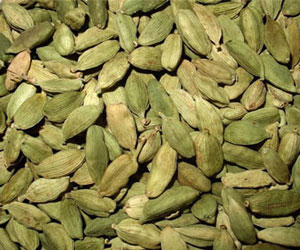 |
|
|||
|
| ||||
Cardamom
Cardamom – is an evergreen herbaceous shrub of the ginger family. It came to Europe from India and the Middle East. It is used as a spice to fruit dishes, as well as preservation of vegetables and fish. It has a high content of essential oils - to 8 percent, which makes it very economical to manufacture. For 1 kilogram of product (essential oil) need only 20 kilograms of feedstock. Cardamom fruits are small boxes containing cardamom seeds. The fruits are harvested from plants slightly immature and well dried. The result is a three-chambered box and a half inches long. Cardamom is a popular spice in the kitchen of the East. It is particularly popular in India. There green cardamom is added to a variety of sauces, rice, meats and drinks, the most popular of which are fermented yoghurt drink - Lassie. Cardamom is also often used to flavor coffee inhabitants of the African continent and Chinese tea. In European cuisine cardamom, in small amounts, is added to some soups, meat, poultry and fish, pies and sausages, biscuits, pastries and cakes. In France cardamom is used in the manufacture of the famous liquor Curasao. In medicine, cardamom is used not as widespread as other medicinal plants. Preparations of cardamom are very effective for the treatment of colds upper respiratory tract (ARI, tonsillitis, bronchitis, etc.). Moreover, this property is successfully combined with other no less useful - the ability to reduce elevated body temperature of the patient. Cardamom is also known for its healing effect on the organs of the gastrointestinal tract (it is used for colic, intestinal motility disorders, flatulence). In addition, in folk medicine cardamom is used for soothing ear and toothaches. Cardamom essential oil has a pleasant fresh scent and is used in the treatment of depression and stress, fears and headaches. | |||||||
|
|||||||